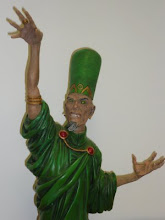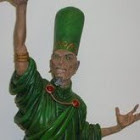
This is a very enjoyable period crime and adventure story with a wide narrative sweep that cleverly comes to focus on a horrific crime. In 1326 in England Edward II is fleeing from his estranged wife, Isabella. Edward's power has been fatally undermined by his relationship with and the actions of his favourite, Sir Hugh le Despenser. Isabella, along with her son Edward and her lover, Sir Roger Mortimer are sweeping across the country and winning the fight with the minimum force and bloodshed. At the same time in Bristol, a family is slaughtered, including an infant and the man accused of it flees. Simon Puttock and his family are caught up in the struggle and find themselves in Bristol with the Queen's army approaching. Sir Baldwin de Furnshill is caught up also and finds himself with the King's rapidly diminishing retinue. The story ties the various threads, from Edward's fall, the siege of Bristol, the murders together into a compelling narrative. The reveals are cleverly stage and the balance between the story elements superbly maintained.
Michael Jecks brings the reader inside the events with a wonderfully realised cast and a willingness to take his time to build up the story. The pathetic figure of Edward II running for his life and kingdom as his wife triumphantly pursues him is deeply confused by how events have run beyond his control. The other historical figures are more lightly sketched in which works very well as the fictional cast are given a chance to shine. The question of loyalty, what it means and what are its limits are explored in a very subtle and effective fashion. They are absolutely central to the story.
The crime plot is not shortchanged, it is cleverly constructed and comes to the fore just as it should and is savage and credible. It sits within its context very well, arising naturally from the demands of the time and the structures of the society.Michael Jecks has the confidence and talent to take the long road in this story and is entirely justified in doing so, this is great fun, packed with memorable characters and sharp observations, a pleasure.











